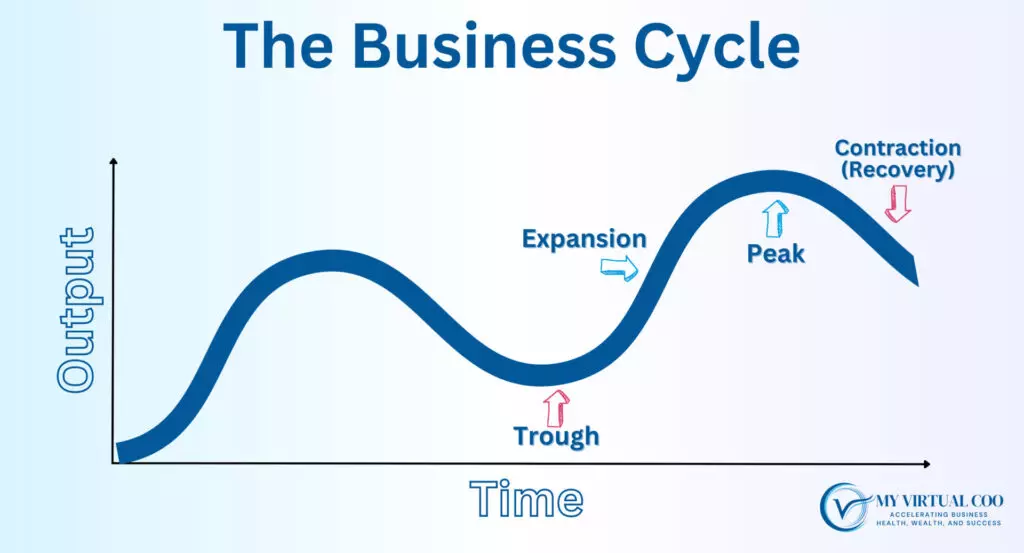You successfully navigated a business growth phase—and now you’re exhausted and impatient for the next evolution of your business.
However, it’s wise to regroup and ensure a smooth trip through the next phase of the business cycle: the contraction (or recovery) phase.
Here are the essential steps to accelerate recovery from growth and move into the next phase.

1. Assess the Situation and Lessons Learned
Visually share the current state of your business, and lessons learned, with your team. Analyze the impact of the growth on operations, finances, and employee morale. Acknowledge the strengths and weaknesses that emerged during the expansion. This will provide valuable insights and energize the team.
2. Realign and Communicate Aspirations
Visually share your changed aspirations (action goals). Be realistic about what your business can do in the recovery phase. Sharing this will help avoid potential disappointments, confusion, and unnecessary pressure on your team.
3. Strengthen Financial Management
The growth phase can sometimes strain finances, leaving you with greater costs and investments. During recovery, improve financial management. Project future cash flow and prioritize paying off debts. Smart financial decisions will stabilize your business and set it up for sustainable growth in the future.
4. Engage Your Team
Your team has been through the highs and lows of the growth phase of the business cycle. Engage with them openly and honestly to understand their experiences and concerns. Communicate clearly and often about the vision for the future. Respect their time and energy levels by encouraging asynchronous collaboration and self-accountability. You will earn energized support from your team, and this will be instrumental in the next phase.
5. Invest in Training and Development
A recovery phase presents an opportunity to invest in your team’s skills and knowledge. Offer training and development programs to enhance their abilities and keep them motivated. By investing in your employees, you’ll build a more resilient workforce ready to face future challenges and growth phases.
6. Focus on Client Relationships
Clients are the lifeblood of any business. During the business growth phase, you might have had limited time for personalized interactions. Now, prioritize building and strengthening client relationships. First, listen to feedback, address any issues, and show that your commitment to excellent customer service remains unwavering despite other changes that may have taken place. Next, ask them about your value, what they wish you did better, and be open to feedback. This focus will increase your raving fan base, which lowers marketing costs and stress.
Conclusion
Recovering from the growth phase of the business cycle is an integral part of sustainable success. By carefully assessing the situation, realigning goals, and strengthening financial management, you’ll set a strong foundation for the future. Engaging with your team, investing in their development, and prioritizing customer relationships will build resilience and loyalty. Then, embrace innovation and learn from mistakes to keep your business on a path of steady progress. Remember, successful recovery is not just about overcoming challenges; it’s about turning them into opportunities for future business growth and prosperity.
Related: Navigating Resilience and Risk Management: Conquering Challenges in a Changing World


